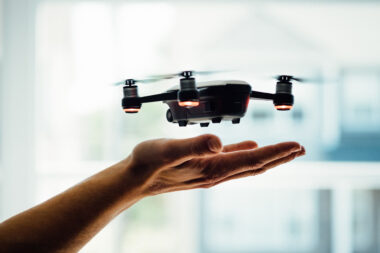Introduction
In an era where clean water is becoming an increasingly precious resource, innovative technologies are essential for ensuring its availability and safety. One such technology making waves in the field of water disinfection is UV-C LED water disinfection. Harnessing the power of ultraviolet light, specifically in the UV-C spectrum, this method offers a highly effective, environmentally friendly, and chemical-free solution for purifying water.
UV-C LED water disinfection
To deactivate or kill harmful microorganisms present in water, UV-C LED water disinfection uses light-emitting diodes (LEDs) that emit ultraviolet (UV) light in the UV-C spectrum. This method provides an effective, environmentally friendly, and chemical-free solution for purifying water.
In UV-C LED water disinfection systems, water is exposed to UV-C light as it passes through a chamber containing UV-C LED lamps. These lamps emit UV-C light with wavelengths typically ranging from 100 to 280 nanometers (nm). UV-C light is particularly effective at disinfection because it damages the DNA and RNA of microorganisms, preventing them from reproducing and causing infections or diseases.
Working process
- Emission of UV-C Light: UV-C LEDs emit UV-C light when an electric current passes through them. Unlike traditional UV lamps that rely on mercury vapor, UV-C LEDs offer advantages such as instant startup, energy efficiency, compact size, and a longer lifespan.
- Water Exposure: The water to be disinfected is passed through a chamber containing UV-C LED lamps. The design of the chamber ensures that all water passing through is exposed to UV-C light uniformly.
- Microorganism Inactivation: As water flows through the chamber, microorganisms present in the water, including bacteria, viruses, and protozoa, are exposed to UV-C light. UV-C photons penetrate the cell walls of these microorganisms, reaching their DNA and RNA.
- DNA/RNA Damage: UV-C photons absorbed by the genetic material of microorganisms cause chemical bonds to form between adjacent nucleotides, disrupting the DNA and RNA strands. This damage prevents the microorganisms from replicating and functioning properly.
- Loss of Reproductive Capability: With their DNA and RNA damaged, microorganisms lose their ability to reproduce. This halts their growth and prevents them from causing infections or diseases.
- Microbial Deactivation: Continued exposure to UV-C light leads to the deactivation of microorganisms. While they may not be immediately destroyed, their ability to pose a threat to human health is neutralized, making the water safe for consumption.
Sensors Used
In UV-C LED water disinfection systems, several types of sensors may be deployed to monitor various parameters and ensure the effectiveness of the disinfection process.
- UV Intensity Sensors: These sensors measure the intensity of UV-C light emitted by the LED lamps. They ensure that the UV intensity is sufficient to effectively deactivate microorganisms in the water.
- Water Flow Sensors: Water flow sensors monitor the rate at which water flows through the disinfection chamber. They ensure that water spends enough time exposed to UV-C light for adequate disinfection.
- Temperature Sensors: Temperature sensors monitor the temperature of the water. Optimal temperature conditions may be necessary for effective UV-C disinfection.
- Pressure Sensors: Pressure sensors measure the pressure within the disinfection chamber or the water supply line. They help ensure proper water flow and system functionality.
- Water Quality Sensors: These sensors measure parameters such as turbidity, conductivity, and pH levels in the water. Monitoring water quality ensures that the disinfection process is effective and that the treated water meets regulatory standards.
- System Status Sensors: These sensors monitor the overall status of the UV-C LED water disinfection system, including power supply, lamp status, and system faults.
- Dose Monitoring Sensors: Some systems may deploy sensors to monitor the UV dose received by the water, ensuring that a sufficient dose is delivered to achieve disinfection.
- Safety Sensors: Safety sensors may be included to detect any potential hazards, such as UV leakage or electrical malfunctions, ensuring the safety of operators and users.
These sensors work together to provide real-time monitoring and feedback, allowing for precise control and optimization of the UV-C LED water disinfection process. By ensuring proper operation and maintenance, these sensors help maintain water quality and safety standards, making UV-C LED disinfection a reliable and effective water treatment solution.
Control mechanisms
- UV Intensity Control: Control mechanisms regulate the intensity of UV-C light emitted by the LED lamps. They may adjust the power supplied to the LEDs to maintain the desired UV intensity levels for effective microbial inactivation.
- Flow Rate Control: Flow rate control mechanisms manage the rate at which water flows through the disinfection chamber. They ensure that water spends sufficient time exposed to UV-C light for adequate disinfection, adjusting flow rates as needed to accommodate variations in water demand.
- Temperature Control: Temperature control mechanisms regulate the temperature of the water within the disinfection system. They may include heaters or cooling systems to maintain optimal temperature conditions for UV-C disinfection.
- Timer Control: Timer-based control mechanisms enable the scheduling of disinfection cycles, ensuring that the system operates at specified intervals for consistent water treatment.
- Feedback Control Loop: Feedback control mechanisms utilize sensors to monitor various parameters such as UV intensity, water flow rate, temperature, and water quality. The feedback loop continuously compares measured values to setpoints and adjusts system parameters accordingly to maintain optimal disinfection conditions.
- Alarm Systems: Alarm systems provide alerts for abnormal conditions or system faults, such as low UV intensity, high water turbidity, or equipment malfunctions. They notify operators of potential issues that may impact disinfection performance or system safety.
- Remote Monitoring and Control: Some UV-C LED water disinfection systems are equipped with remote monitoring and control capabilities. Operators can monitor system performance, adjust settings, and receive alarms remotely, enhancing system flexibility and accessibility.
- Data Logging and Analysis: Data logging mechanisms record operational data, including UV intensity, flow rates, temperature, and alarm events. Data analysis tools may analyze this data to identify trends, optimize system performance, and diagnose potential issues.
- Safety Interlocks: Safety interlocks are mechanisms that ensure the safe operation of the disinfection system. They may include features such as UV light shields, door interlocks, and emergency stop buttons to prevent exposure to UV radiation and mitigate potential hazards.
Monitoring of parameters
Monitoring of UV intensity, water flow rate, and system status in UV-C LED water disinfection systems involves the use of various sensors and methods. Here’s how each parameter is monitored in detail, along with any relevant formulas:
- UV Intensity Monitoring: UV intensity sensors measure the intensity of UV-C light emitted by the LED lamps within the disinfection chamber. These sensors typically utilize photodetectors calibrated to the UV-C wavelength range (around 254 nm). The intensity of UV-C light is measured in units such as microwatts per square centimeter (μW/cm²).
Formula: The formula to calculate UV dose (expressed in millijoules per square centimeter, mJ/cm²) is: UV Dose = UV Intensity (μW/cm²) × Exposure Time (seconds) / 1000
Based on the UV-C light’s intensity and the duration of exposure, this formula determines the UV dose that the water will receive.
- Water Flow Rate Monitoring: Water flow rate sensors measure the rate at which water flows through the disinfection chamber. These sensors can be based on various principles, such as electromagnetic, ultrasonic, or mechanical methods. The flow rate is typically measured in units such as liters per minute (L/min) or gallons per minute (GPM).
Formula: Flow Rate = Volume of Water (liters or gallons) / Time (minutes)
This formula calculates the flow rate based on the volume of water passing through the system within a specified time interval.
- System Status Monitoring: System status monitoring involves the continuous assessment of various operational parameters and conditions to ensure the proper functioning of the UV-C LED water disinfection system. This includes monitoring indicators such as:
- Power supply status: Ensuring adequate power supply to the LED lamps.
- Lamp status: Monitoring the operational status (on/off) and performance of individual LED lamps.
- Alarm status: Detecting and signaling any abnormal conditions or system faults, such as low UV intensity or high water turbidity.
- Temperature status: Monitoring the temperature within the disinfection chamber to ensure optimal conditions for UV-C disinfection.
- Flow status: Verifying that water flow rates are within the desired range for effective disinfection.
Formula: System status monitoring typically does not involve specific formulas but relies on threshold values and setpoints programmed into the control system. Alarm thresholds are configured based on operational requirements and regulatory standards, triggering alerts when monitored parameters deviate from acceptable ranges.
By monitoring UV intensity, water flow rate, and system status using appropriate sensors and methods, operators can ensure the effectiveness and reliability of UV-C LED water disinfection systems in providing safe and clean water.
UV-C LED damage RNA and DNA of microorganisms
- Absorption of UV-C Light: When microorganisms are exposed to UV-C light emitted by LED lamps, the photons of UV-C light are absorbed by the genetic material within the microorganism, namely DNA (deoxyribonucleic acid) and RNA (ribonucleic acid).
- Formation of Thymine Dimers: The absorbed UV-C photons specifically target the nucleotide bases of DNA and RNA, particularly thymine (in DNA) and uracil (in RNA). When two adjacent thymine or uracil bases are hit by UV-C photons, the energy from the photons causes the formation of covalent bonds between them.
- Distortion of DNA/RNA Structure: The formation of these covalent bonds between adjacent nucleotide bases leads to structural distortions in the DNA or RNA molecule. These distortions are known as thymine dimers or uracil dimers, depending on the specific nucleotide involved.
- Disruption of Genetic Information: The presence of thymine or uracil dimers in the DNA or RNA molecule interferes with the normal functioning of the genetic material. It can disrupt processes such as DNA replication, transcription, and translation, which are essential for the microorganism’s ability to reproduce and carry out its normal metabolic functions.
- Loss of Reproductive Capability: As a result of the damage to their DNA or RNA, microorganisms lose their ability to replicate accurately during cell division or to produce proteins necessary for their survival and reproduction. Without functional genetic material, the microorganisms are unable to reproduce effectively, leading to a decline in their population.
- Microbial Inactivation: Over time, the cumulative damage inflicted by UV-C light on the DNA and RNA of microorganisms renders them nonviable or inactive. While the microorganisms may not be immediately destroyed, their ability to proliferate and cause infections or diseases is significantly diminished.
Conclusion
The utilization of UV-C LED technology for water disinfection presents a promising avenue for addressing microbial contamination in water sources. Through the mechanisms of DNA and RNA damage, UV-C light effectively disrupts the reproductive capability of microorganisms, rendering them inactive and reducing the risk of waterborne infections and diseases. This chemical-free and environmentally friendly approach offers significant advantages over traditional disinfection methods, including enhanced efficiency, safety, and sustainability. As research in this field continues to evolve, further advancements in UV-C LED water disinfection systems are expected, paving the way for improved access to clean and potable water worldwide.



